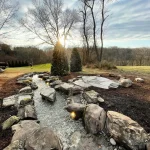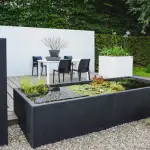How to Build a Fishing Pond: A Step-by-Step Guide
Are you dreaming of owning a serene fishing pond where you can spend your leisure time and enjoy the tranquility of nature? Building a fishing pond can be a rewarding and exciting project that will provide endless enjoyment for you, your family, and friends. In this comprehensive guide, we will walk you through the step-by-step process of building your very own fishing pond. From planning and design to construction and maintenance, we’ve got you covered.
Step 1: Planning and Site Selection
The first step in building a fishing pond is careful planning and site selection. Consider the size of the pond you want to build, the type of fish you plan to stock, and the natural landscape of your property. Look for an area with a natural depression or low-lying land that can be easily excavated to create the pond. Ensure that the site receives adequate sunlight and is not prone to excessive runoff or flooding.
Step 2: Obtaining Permits and Approvals
Before you begin construction, it’s essential to obtain any necessary permits and approvals from local authorities. Depending on your location, you may need permits for water use, land disturbance, and environmental impact. Contact your local government or environmental agencies to ensure that you comply with all regulations and requirements.
Step 3: Design and Layout
Once you have selected the site and obtained the necessary permits, it’s time to design the layout of your fishing pond. Consider the depth, shape, and size of the pond, as well as any additional features such as islands, underwater structures, or shoreline vegetation. A well-thought-out design will not only enhance the aesthetics of the pond but also create a healthy and sustainable habitat for fish and other aquatic life.
Step 4: Excavation and Construction
Excavation is a critical phase in building a fishing pond. If the site is not naturally conducive to holding water, you may need to line the pond with a durable material such as clay or a synthetic liner. The depth of the pond will depend on the type of fish you plan to stock, with deeper ponds typically being more suitable for larger fish. Consider hiring a professional excavator or contractor with experience in pond construction to ensure that the excavation is done correctly and efficiently.
Step 5: Water Source and Circulation
Once the pond has been excavated and lined, you will need to establish a reliable water source to fill the pond. Depending on the availability of natural water sources such as springs or streams, you may need to install a well or water delivery system. Proper water circulation is essential for maintaining water quality and oxygen levels, especially if you plan to stock fish. Consider incorporating aeration systems or water pumps to ensure adequate circulation and oxygenation.
Step 6: Stocking the Pond
After the pond has been filled with water, it’s time to stock it with fish. Consider the types of fish that are native to your region and well-suited to the conditions of your pond. Popular choices for fishing ponds include bass, catfish, trout, and bluegill. Consult with a local fisheries expert or extension agent to determine the appropriate stocking density and species for your pond.
Step 7: Shoreline Development and Landscaping
Enhance the beauty and functionality of your fishing pond by developing the shoreline and surrounding landscape. Planting native vegetation such as grasses, shrubs, and trees will not only create a natural and attractive habitat but also help prevent erosion and filter runoff. Consider creating fishing piers, docks, or access points to make the pond easily accessible for fishing and recreational activities.
Step 8: Maintenance and Management
Once your fishing pond is complete, regular maintenance and management are essential to keep it healthy and thriving. This includes monitoring water quality, controlling aquatic vegetation, and managing fish populations. Consider implementing a maintenance schedule that includes regular water testing, vegetation control, and stocking adjustments to ensure the long-term success of your fishing pond.
Conclusion
Building a fishing pond is a rewarding endeavor that offers countless opportunities for relaxation, recreation, and enjoyment of the natural world. By following these step-by-step guidelines for planning, construction, and maintenance, you can create a beautiful and sustainable fishing pond that will provide years of pleasure for you, your family, and future generations. Whether you’re a seasoned angler or simply a nature enthusiast, a well-designed and well-maintained fishing pond is sure to become a cherished feature of your property for years to come.





